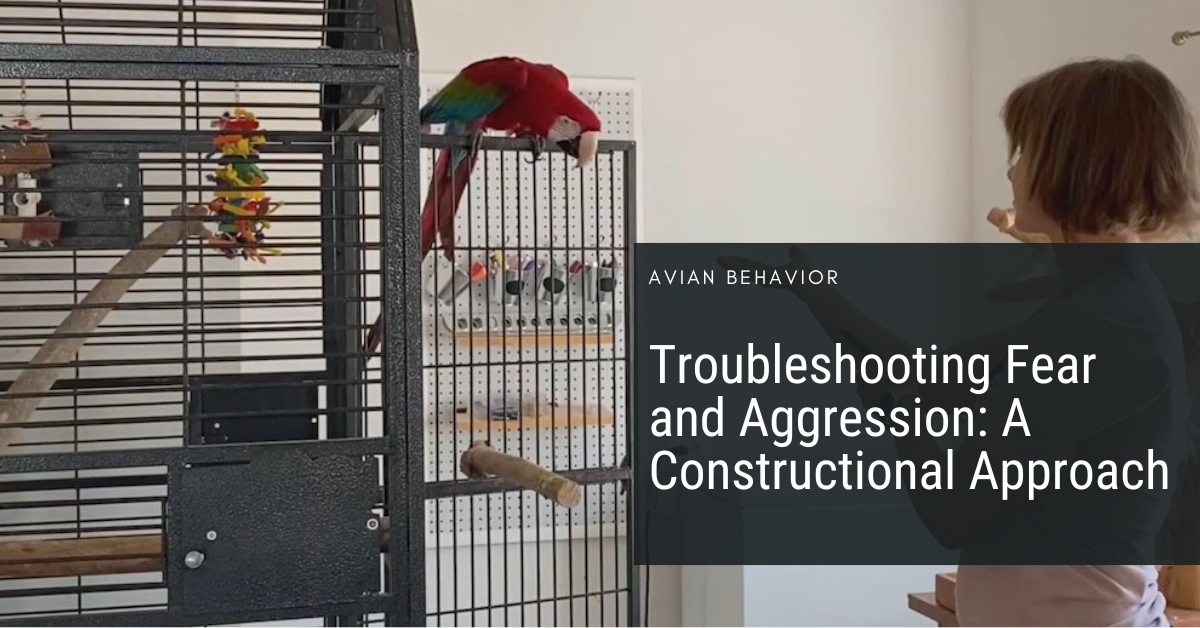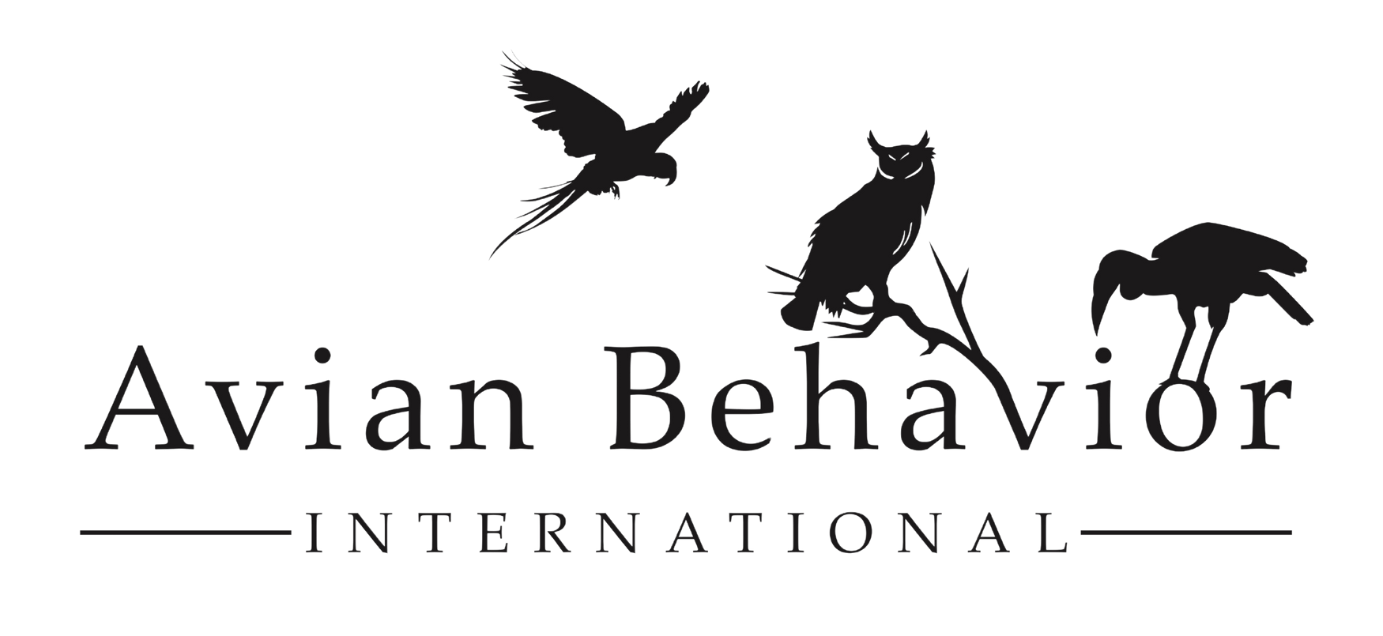
21 Nov Troubleshooting Fear and Aggression: A Constructional Approach
Is fear an action or an emotion?
It’s a question worth sitting with. Because how we answer it shapes everything about how we respond when a bird displays fear or aggression in training.
Emotions as Contingency Descriptors
Here’s a reframe that might change how you think about this: emotions aren’t reactions to the world. Emotions construct our world.
That’s from Lisa Feldman Barrett’s work in neuroscience. And Dr. Joe Layng takes it further. He argues that emotions are patterns in contingencies, they describe the relationship between the animal’s behavior and its environment.
Instead of saying “the bird is afraid, so it flies away,” Layng would say: we call that pattern of behavior “fear” when the contingencies look like this, the animal is confronted with something that has reduced access to reinforcers and/or increased likelihood of aversive outcomes, so behavior organizes itself around escape or avoidance.This fundamentally changes what we’re looking at and what we do about it.
Reframing Our Goal
Here’s the critical shift: fear and aggression aren’t pathologies. They’re natural, functional responses within the animal’s degrees of freedom.
And that means the myth of “zero bates” or “no aggression allowed” needs to go.
Zero bates sounds ideal, but it’s not tenable in dynamic relationships or evolving contexts. This is particularly true with those of us that are working in challenging environments like school classrooms and other outreach programs that are challenging to control. These environments aren’t meant to compromise our ethics. This is about training our birds a set of skills to handle the scenario and understanding that training for “perfect” behavior doesn’t not exist, even in highly controlled environments. There is always a compromise. Constructional change is about function, not perfection.
When we treat fear and aggression as problems to eliminate rather than information about contingencies, we miss what’s actually happening. We end up trying to suppress behavior instead of building alternatives.
Why Counterconditioning Often Fails
This brings us to a common approach that often doesn’t work: counterconditioning.
Counterconditioning relies on linear stimulus-emotion pairing. Present the scary thing, pair it with food, and the animal should feel better about the scary thing. But this approach ignores missing behavioral links.
The constructional alternative is different. Instead of trying to change how the animal feels about a stimulus, we build small, reliable skills that contact reinforcement through predictability.
This is skill building as fear reduction. When the bird has more things it can do, more ways to access reinforcement, more ways to navigate the situation, fear naturally reduces because the contingencies have changed.
Fear and Aggression as Dynamic Variables
It’s also important to understand that fear and aggression aren’t fixed traits. They’re dynamic variables that change over time and context.
Early in training, high arousal is expected. Birds with no reinforcement history for humans will display baseline defensive behavior. That’s not a problem, that’s biology.
Long-term patterns shift as skill sets grow. Baseline fear reduces as the bird develops more repertoire. But temporary regressions will always appear under novel contingencies. That’s also normal.
Species-specific ecology matters here too. Vultures have distance thresholds. Parrots have tactile defensiveness. Raptors have startle thresholds. Understanding these differences helps us set appropriate expectations and design better training.
A Troubleshooting Framework
When you’re working through fear or aggression, here’s a scaffold to work from:
First, identify variables. What consequence is maintaining the response? What is the bird getting out of this behavior?
Second, evaluate degrees of freedom. How many access routes to reinforcement exist? If there’s only one, that’s your problem.
Third, check for skill gaps. What alternative repertoires are missing? What can’t the bird do yet that would give it more options?
Fourth, adjust contingency balance. Can we make calm behavior more efficient? Can we make it easier for the bird to succeed with a different response?
Fifth, verify environment predictability. Is uncertainty creating conflict? Unpredictable environments create defensive behavior.
This is function over form. We’re not asking “how do I stop this behavior?” We’re asking “what is this behavior telling me about the contingencies, and how do I change them?”
Reframing Success
Progress isn’t the absence of fear or aggression.
Progress equals greater flexibility, not absence of strong emotion. Baseline fear is biological—constructional training gives tools to manage it, not eliminate it.
Define success as voluntary participation, faster recovery, more variability in calm responses. These are the markers that tell you the contingencies are improving.
Fear and aggression aren’t failures. They’re points of contact between the environment and the organism’s history. Our job is to give the bird more ways to succeed.
The Real Problem
Here’s a statement worth remembering: fear is a problem because we have been treating it as a positive reinforcement motivation issue when it’s maintained as a negative reinforcement contingency.
When a bird is afraid, it’s not that they don’t want the food enough. It’s that their behavior is organized around escape and avoidance. No amount of better treats will fix that. You have to change the contingency structure, ive them control, build skills, increase degrees of freedom.
That’s the constructional approach. Not suppressing fear, not overpowering it with food, but building an environment where fear responses become less necessary because the bird has better options.
This is advanced-level content from our recent workshop. Inside the Avian Behavior Lab, we go deeper into these concepts with real training sessions and Q&A. Join us if you’re ready to move beyond basic positive reinforcement into constructional training design.

